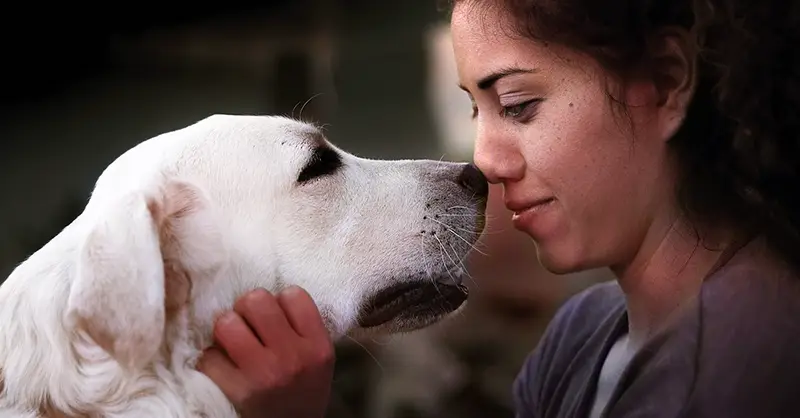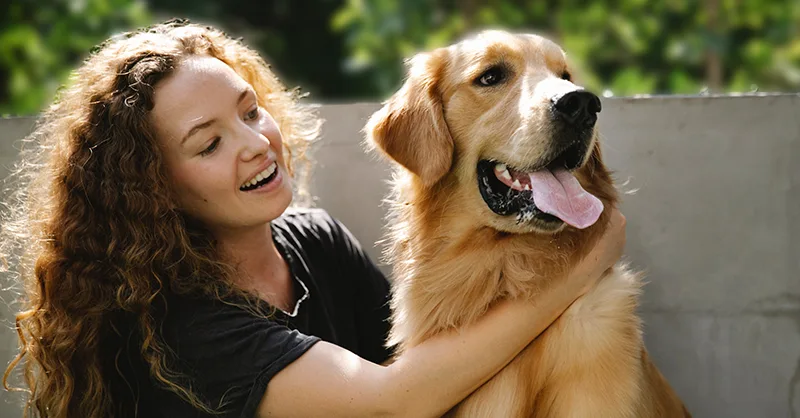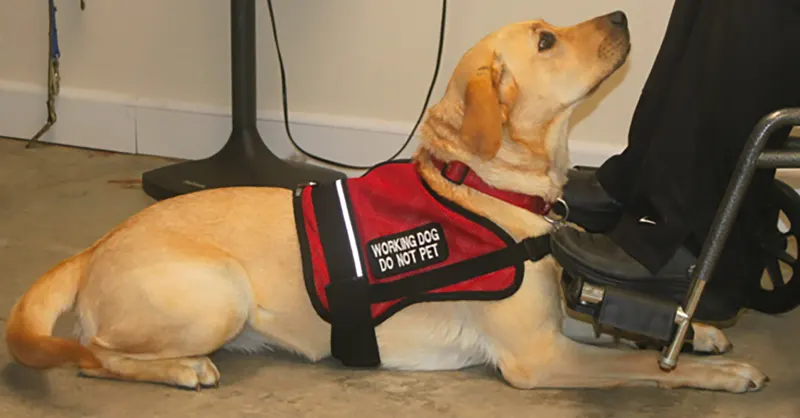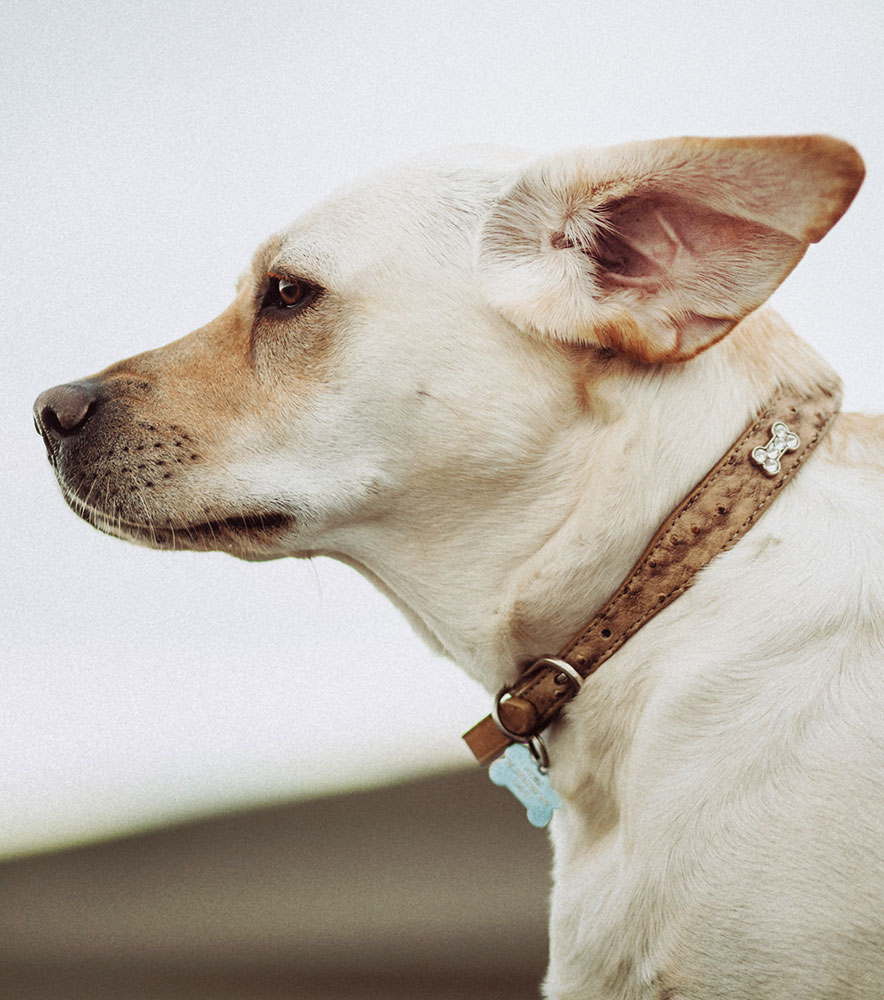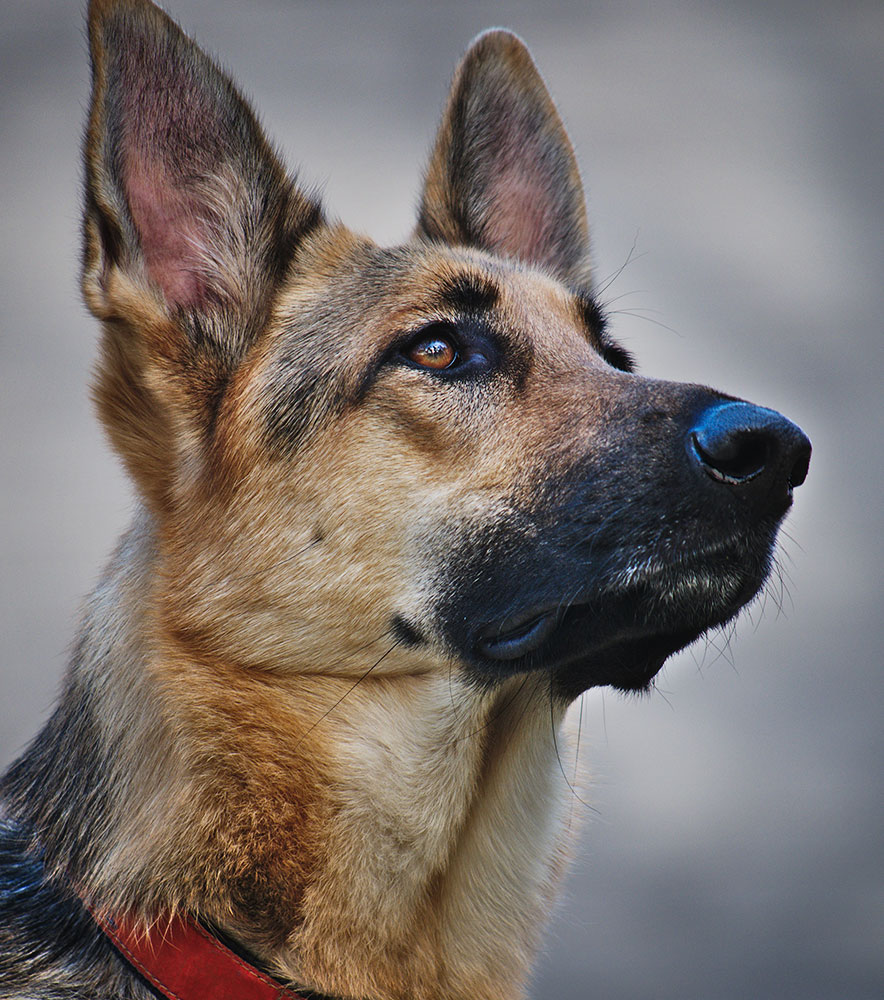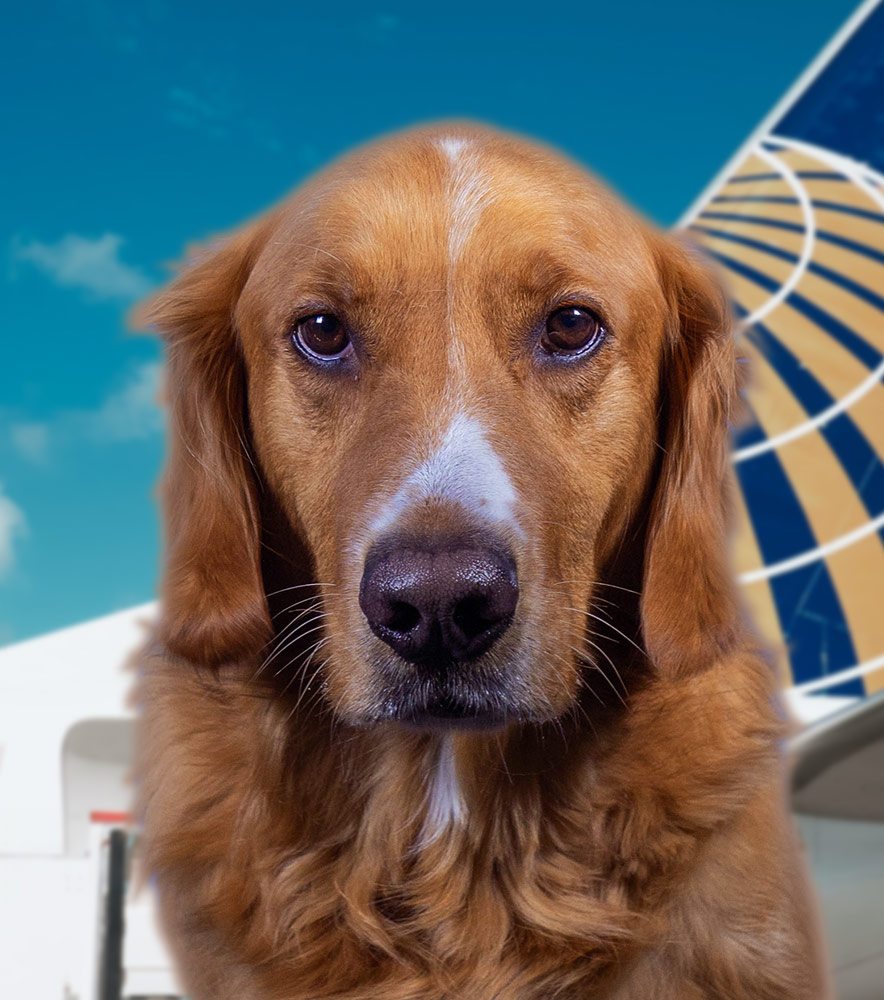Archive for the ‘Service Dog Tips’ Category
Canines are very smart, even though their goofy grins and tail-wagging may distract from their intelligence. Service dogs, in particular, show their intelligence by performing tasks that help people with disabilities manage their daily lives. These unique tasks include detecting a person’s blood sugar through smell, helping retrieve life-saving medication, and helping visually impaired people navigate busy streets. One essential function that a service dog can do is to be the ears for its handler who is hearing impaired. This category of service dogs is called hearing dogs.
What Do Hearing Dogs Do?According to the National Institutes of Health, about 15% of adults in the U.S. have some hearing impairment. Adults 60–69 have the highest rates of hearing loss. The Better Hearing Institute states that hearing loss can affect household income, costing up to $12,000 each year. People who don’t receive treatment or adequate assistance for their hearing loss are twice as likely to be depressed than those with no hearing problems.
The World Health Organization defines deafness as “having profound hearing loss, which implies very little or no hearing.” For people who are deaf, having a service dog provides a direct link to the world around them. Hearing dogs can alert their handlers in various situations:
Kitchen help: update its hander of the status of oven timers, coffee makers, and kettles Communication: let their handler know when telephones and doorbells ring Child care: fetch their handler when their babies’ calls or cries Dangers: alert their handler of smoke or fire alarms Street safety: make their handler aware of oncoming traffic Where Can I Get a Hearing Dog?A hearing dog may be purchased through a reputable service dog organization, or you may train the service dog on your own. Hearing dogs, like all service dogs, are an expensive investment and can cost over $20,000. The cost depends on the organization and whether an individual qualifies for a price reduction. The following are organizations that specialize in connecting trained hearing service dogs to the right homes:
NEADSNEADS provides service dogs free of cost as the client agrees to fundraise $8,000, using the help of NEADS fundraising resources. NEADS offers service dogs for children, veterans, and the hearing impaired.
International Hearing Dogs, Inc.International Hearing Dogs, Inc. provides service dogs at no cost to clients. Although their dogs cost about $15,000 to house, train, and place, their fees are covered through donations.
Canine Companions for IndependenceCanine Companions for Independence provide hearing dogs free of charge for people who apply and qualify. Their dogs are Labrador and Golden Retrievers that are specially trained to be service dogs.
The Hearing Dog ProgramThe Hearing Dog Program works diligently to match handlers to their ideal dog. Dogs are awarded to qualified applicants at no cost, though recipients are responsible for grooming costs and care.
How Do I Train a Hearing Dog?Though many organizations offer hearing dogs to qualified people for free or a nominal fee, there aren’t many dogs available. You may fall on a waiting list, or you may not qualify. If you find the cost of buying a hearing dog is too high for your budget, you always have the option of training a hearing dog yourself.
First, you need to determine what breed or size of dog best meets your lifestyle and needs. Then you would find a dog that has the right temperament and traits for a service dog. Several months of audio-response and public-access training follow, documenting training progress in a service dog training log. This training may encompass everything from typical sit-stay commands to alerting their handler of knocks on doors and smoke alarms. Training takes time and patience, which isn’t always for everyone. If you have the time and inclination — and possibly someone to help — self-training may prove to be the most cost-effective option.
How Do You Qualify?For most hearing service dog agencies, applicants must meet a set of qualifications to receive a service dog, even if you pay for one full-price. These qualifications ensure that the dogs are successful at what they do and don’t pose a danger to others. Here are a few standard qualification requirements. Applicants must be:
18 years or older Have moderate to severe hearing loss Be able to participate in the training process Meet the financial and physical requirements to have a service dog Not have other dogs in the homeQualifying for a hearing service dog typically requires a diagnosis and assessment by a physician or audiologist. Having documentation available prior to starting your applications ensures that you are prepared and makes the process less intimidating. Keep in mind that organizations receive hundreds of applications, and a response may take time. Remember to politely follow up if you have any inquiries regarding the status of your application. Obtaining a service dog takes time and effort but is worth the wait.
Dogs are adorable creatures. The fluffy fur and floppy ears seem just made for petting. But, in the case of service dogs, you should save your cuddles for others. There are many justifiable reasons why you shouldn’t pet a service dog. For service dogs, especially ones that are “on the clock” and working, a friendly pat on the head can ultimately distract them from the task at hand.
Reasons to Not Pet a Service DogUnlike pets and therapy dogs, service dogs are always on the job and shouldn’t be addressed by anyone other than their handler. Here are a few reasons why service dogs shouldn’t be petted.
1. Service Dogs Are Not PetsAccording to the Americans with Disabilities Act (ADA), a service animal is a “dog that has been individually trained to do work or perform tasks for an individual with a disability.” These tasks are vital for the well-being and safety of people with disabilities. Service dogs often improve the quality of life, health, safety, and security of the people they work for.
2. Service Dogs Are Doing a Vital JobPeople understandably mistake service dogs as very well-trained and well-behaved dogs. Though they are both those things, they’re also so much more. Service dogs are not always easy to verify, but they can perform life-saving functions, like:
Obtain emergency medication or enlist help should a medical emergency occur. Raise the legs of an unconscious person to increase their blood pressure. Detect low blood sugar, impending seizures, and determine if a dangerous allergen is present in the environment. 3. Interacting With a Service Dog Can Distract it From its Assigned TasksWhen a surgeon performs surgery, people don’t approach them to shake their hands because it would be a distraction and possibly life-threatening intervention for the patient. The same goes for service dogs. Service dog tasks may not be surgery, but the focus required from the dog is much the same as a surgeon’s. Dogs are notoriously distractible animals, and a high level of discipline is needed during their service.
Despite their copious hours of training, service dogs are still animals. Their instincts can overcome their training at any time, especially if a stranger comes to pet them. And any distraction from their tasks can put their handler at risk.
A service dog on duty is not always easy to identify. Therefore it’s better to refrain from petting service dogs at all times. 4. A Service Dog Could be Working, Even When it Doesn’t Look Like itPeople should never pet a dog without asking the owner first. This rule of thumb applies to all dogs, not just service dogs. For service dogs, however, it’s not always easy to tell if they’re a service dog or not, or even if the service dog is “on the clock.”
Most service dogs don’t wear a harness, nor are they as easy to spot as visual assistance dogs or guide dogs. Because of this, it’s always safer not to spontaneously pet strange dogs. Always ask their owner first before petting. If a service dog owner refuses to have their dog handled or greeted, there’s no need to be offended. It just means their dog is at work and needs to concentrate.
5. The Dog May Not be a Service DogMany people believe when a dog wears a vest, it must be a service dog. However, service dogs are not required to wear vests, and, in turn, vests are easy to purchase. Unscrupulous people sometimes buy vests to pose their pet dogs as service dogs. These dogs lack the public access skills and training to interact safely with others, and they may bite or attack!
Other Factors to Consider Regarding Service DogsPeople are naturally curious about service dogs. Most people are animal lovers and want to learn more about these life-saving dogs. So, it can leave strangers baffled when a service dog handler won’t answer questions or engage in conversation. It may seem rude. However, for the service dog handler, it poses personal questions about their disability that they may not wish—and aren’t required—to disclose. In addition, having their handler speak with strangers may again distract a service dog from their job.
But Service Dogs Have Playtime, TooThough service dogs’ work is crucial, their lives aren’t all work and no play. Service dogs receive training to know when they are not required to work. It’s during these times they can run around and play with other dogs. Some service dogs have defined times when they are working, and other work on call. Regardless, service dogs need downtime just like anyone with a job. When it’s time to play, service dogs are just like any other dogs. Some service dogs live with families. These families may even have other dogs at home that aren’t service dogs. Depending on their tasks, service dogs know when they can and cannot function as “regular” dogs. Trainers choose service because they excel at what they do and enjoy doing their work, so true service dogs prefer working rather than sleeping at home.
Remember, it’s hard to know when a service dog is not “on the clock,” so it’s always best not to engage a service dog at all. If absolutely necessary, a person can address their handler instead. Service dogs need to focus on their tasks, and distractions could lead to dangerous situations for their handlers. So, the next time temptation strikes to pet a service dog, curb that emotion and think of all the reasons you shouldn’t pet a service dog. The service dog handler’s needs are priority over your desire to pet the dog.
United Airlines offers customers the most comprehensive network of worldwide routes. They also include one-stop or no-stop flights to and from anywhere in the United States. With hubs inside the four largest U.S. cities, it’s no wonder that United Airlines leads the airline industry. If you’re planning on booking a flight, United Airlines is probably one of your options. And if you’re traveling with your service dog, understanding United Airlines’ service, dog policies can simplify your trip.
Traveling with Service Animals on United AirlinesUnited Airlines welcomes service dogs within their cabin, as long as they perform tasks for a person with a qualified disability. United Airlines defines service animals as animals trained to do work to benefit a qualified person with a disability. The disabilities may include — but are not limited to — psychiatric, intellectual, or physical issues.
People with service dogs may travel with up to two animals. Service animals must be dogs and over four months of age to travel within the airline cabin.
How to Fly with a Service Dog on United Airlines Make sure that your dog qualifies and is trained to provide a service for your disability. Complete the required document(s) (linked below) for your service animal(s). Submit your completed documents to United Airlines at least 48 hours in advance. If you booked your flight within 48 hours of your departure, provide your completed documents at the airport. Contact United Airlines via the United Accessibility Desk (1-800-228-2744) with any questions. Required DocumentsUnited asks to complete a few forms before flying with a service animal. The Department of Transportation (DOT) forms are as follows:
U.S. Department of Transportation Air Transportation Service Animal Training and Behavior Attestation Form: The Service Animal Training and Behavior Attestation Form is mandatory for all service animals. The form serves as a customer’s statement that the service dog meets the training and behavioral standards for safety. U.S. Department of Transportation Service Animal Relief Attestation Form (Relief Form): The Relief Attestation Form must be completed for flights that are 8 hours or longer. The form ensures that the handler understands the service dog can relieve themselves in such a way that will not be a health or sanitation hazard to others on the plane.United Airlines asks that both forms be completed and carried with you. For tickets purchased 48 hours before the flight departure, the completed forms may be presented to the airline agent at the airport. United Airlines welcomes you to contact the United Accessibility Desk at 1-800-228-2744 for questions regarding traveling with your service dog. Please be aware that, depending on your destination, additional documents may be necessary.
Before flying with your service dog on United Airlines, familiarize yourself with their rules and policies. Traveling InformationWhen inside the cabin, the service dog should sit on the floor in front of their handler’s feet. To ensure safe aisle access for others, the dog should not protrude into the aisle or block others. Smaller dogs with a kennel must fit United Airlines’ stowage parameters. Service dogs and their handlers are prohibited from sitting in the exit row seats.
United Airlines asks customers flying with service dogs to adhere to the following:
Travel is not allowed within 30 days of a service dog’s rabies vaccination. Service dogs must be under the control of their handler at all times. Service dogs must behave appropriately and follow their handler’s directions. Service dogs are harnessed or leashed at all times. Travel within an airline cabin to an international destination, Guam, or Hawaii, may require a current copy of the service dog’s vaccination records. United recommends that vaccine copies should be on hand whenever traveling. Service Dogs in TrainingUnited Airlines allows dog trainers to bring one service dog in training on board — no charge —, as long as it assists a person with a disability. The service dog in training should not occupy a seat and should meet service dog documentation requirements. If not, handlers and trainers are welcome to check the dogs as pets.
Therapy Animals and Emotional Support Animals on United AirlinesOnly service animals helping a person with a disability may travel in the airline cabin free of charge. Therapy animals, comfort animals, and emotional support animals are not considered service animals. When traveling with these animals, pet-related regulations and costs will apply.
Flying with PetsIf you’re flying with a puppy or kitten as a pet, it must be at least four months old and accompanied by an adult person. The pet must remain in the floor space under the seat in a kennel. If they’re too large for a kennel, they must utilize United Airlines’ PetSafe program.
Documentation for PetsAnyone traveling with a pet on United within the continental U.S. will need a health certificate along with proof of the last rabies vaccine. Travel is prohibited within 30 days of the rabies vaccine. Some states like Hawaii and other countries require additional documents, and travelers must comply with all pet travel requirements relevant to their destination.
Flying with United AirlinesAs one of America’s premier airlines, United Airlines’ regulations for service animals are generally in line with other major U.S. airlines. Although service dogs are welcome in the cabin of United Airline’s airplanes, people traveling with service dogs should ensure that the correct documents and regulations are met. This makes the journey more enjoyable for both the individual and the service animal.
